Related Research Articles

The Palazzo Pitti, in English sometimes called the Pitti Palace, is a vast, mainly Renaissance, palace in Florence, Italy. It is situated on the south side of the River Arno, a short distance from the Ponte Vecchio. The core of the present palazzo dates from 1458 and was originally the town residence of Luca Pitti, an ambitious Florentine banker.

The province of Lucca is a province in the Tuscany region of Italy. Its capital is the city of Lucca.

The nobility of Italy comprised individuals and their families of the Italian Peninsula, and the islands linked with it, recognized by the sovereigns of the Italian city-states since the Middle Ages, and by the kings of Italy after the unification of the region into a single state, the Kingdom of Italy.
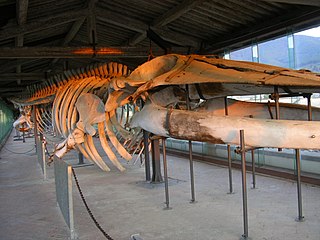
Pisa Charterhouse is a former Carthusian monastery, and is the home of the Pisa Museum of Natural History. It is 10 km outside Pisa, Tuscany, Italy.

Ca' Loredan Vendramin Calergi is a 15th-century palace on the Grand Canal in the sestiere (quarter) of Cannaregio in Venice, northern Italy. It was commissioned by the patrician Loredan dynasty, namely Andrea Loredan, and paid for by Doge Leonardo Loredan, with construction starting in 1481. The architecturally distinguished building was the home of many prominent people through history and was the place where composer Richard Wagner died.

The Biblioteca Riccardiana is a library in Florence, Italy. The library is located adjacent to the Palazzo Medici Riccardi. The main facade of Michelozzo's Medici Riccardi palace is on Via Camillo Cavour, while Riccardiana library's main but unimposing entrance and facade is located on Via de' Ginori, parallel and northeast of Cavour. The rear of the Medici palace has a small polygonal private garden, whose north side also has an entrance to the library.

San Giovanni Fuoricivitas is a Romanesque religious church and adjacent buildings in Pistoia, Tuscany, central Italy. The adjective fuoricivitas refers to it location, outside of the first set of city walls, when it was founded during the era of Lombard rule in Italy.
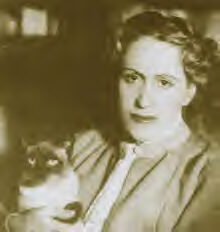
Gianna Manzini was an Italian writer whose Ritratto in piedi won her the Premio Campiello in 1971. It is a semi-autobiographical portrait of her father, an Italian anarchist. After several banishments for his political activities, her anarchist father was exiled to the small hilltop town of Cutigliano in 1921, 25 km northwest of Pistoia, where he would die of a heart attack in 1925 after being chased by fascist hoodlums.
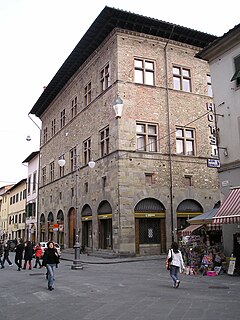
Palazzo Panciatichi or Palazzo del Balì is a medieval aristocratic palace located on Via Camillo Benso Cavour #35 in Pistoia, Tuscany, Italy. It a block away from the Palazzo Fioravanti.

The Palazzo Marchetti is a Baroque-style palace located at Via Curtatone e Montanara in central Pistoia, Tuscany, Italy. The palace, which once served as a civic art gallery, is used in 2019 as a civic archive for various family collections of documents.
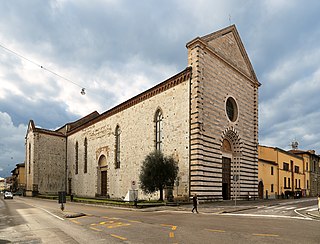
San Francesco is a Gothic-style, Roman Catholic church located on the piazza of the same name in Pistoia, region of Tuscany, Italy.

The Villa del Barone is a Renaissance style, rural aristocratic palace located in the rural neighborhood or frazione of Bagnolo di Sopra, located within the town limits of Montemurlo, province of Prato, region of Tuscany, Italy. The villa and the properties associated once belonged to the Tempi family, by the 16th century, it belonged to Baccio Valori, from whom it was confiscated by Cosimo de Medici. Cosimo granted it to the Rossi family. Later belonged to Vettori family.
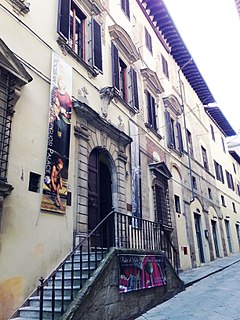
The Palazzo Rospigliosi a Ripa del Sale or Rospigliosi sulla Ripa is a former aristocratic palace located at Via Ripa del Sale number 3 in central Pistoia, Tuscany, Italy. The location is in a small alley adjacent to the Pistoia Cathedral, within the most ancient set of city walls. In the 19th century, the palace was donated to the diocese and now is used as both Diocesan museum and for the display of the collection donated by Clemente Rospigliosi.

The Palazzo Rospigliosi a Via del Duca is a former aristocratic palace located at Via Ripa del Sale number 3 in central Pistoia, Tuscany, Italy. The palace was the birthplace in 1600 of Giulio Rospiglio, later Pope Clement IX.

The Palazzo degli Anziani also known as the Palazzo del Comune, della Comunitá or del Giano is a Gothic-style stone palace located in the ancient historic center of Pistoia, Tuscany, Italy. The palace served as city hall for centuries; it still belongs to the comune and now mainly houses the Museo Civico d'Arte Antica.
The Palazzo Rossi is a former aristocratic palace located at Via Rossi in central Pistoia, Tuscany, Italy. The palace now serves in part to house collections and offices of the Fondazione Cassa di Risparmio di Pistoia e Pescia.

San Leone, once called the oratory or church of Santo Spirito, is a small Baroque-style Roman Catholic church located adjacent to the Vivarelli Colonna in Pistoia, region of Tuscany, Italy. In 2017, restoration of the Baroque era frescoes in the apse and ceilings were completed.
The Palazzo del Priorino is a Baroque-style palace on Via Pacini in central Pistoia, Tuscany, Italy.

San Giovanni Battista is a deconsecrated Roman Catholic church located on Corso Gramsci in Pistoia, region of Tuscany, Italy. The present building is a reconstruction of the former Renaissance-style church which was severely damaged during World-War II, and now is used for exhibitions.

The Monument to Niccolò Fortiguerra is a marble statue of the Cardinal Fortiguerra, a prominent 15th-century benefactor of Pistoia, who endowed the city with a school for the indigent and a library. The latter still exists in the city. The statue stands atop a simple high marble pedestal in the piazza of Santo Spirito, in Pistoia, region of Tuscany, Italy.
References
- ↑ Announcement by Istituti Raggruppati.
- ↑ Official site of the residence.
- ↑ Pistoia e il suo territorio: Pescia e i suoi dintorni: guida del forestiero, by Giuseppe Tigri, Tipografia Cino, Pistoia (1853): page 229.